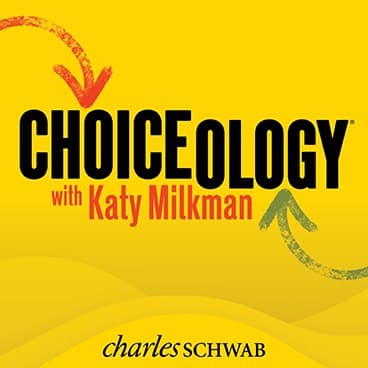A Choice Apart: With Guests Max Bazerman & Vivienne Wagner
Have you ever purchased a car or a motorcycle or a boat, based on some particular quality it had that made you fall in love? Maybe it was candy apple red. Maybe it had sleek lines. Maybe the engine made a pleasing purr. Hopefully that decision was a happy one. But what happens when the red sports car spends most of its time in the shop? Or the sleek motorbike is hard on your back? Or the purring boat engine is a gas-guzzler?
In this episode of Choiceology with Katy Milkman, we look at how our preferences tend to shift when we evaluate a choice on its own versus side-by-side with other possible options.
The episode begins with Vivienne Wagner and her family's decision to adopt an adorable puppy after seeing a popular movie that featured the breed. (You know, the spotty dogs—over a hundred of them.) It's a cautionary tale about a lovable but incredibly difficult pooch named Barkley and the perils of selecting a family pet in a vacuum.
Max Bazerman is an authority on the phenomenon of shifting preferences when decisions are made separately or jointly. He joins Katy to discuss the ways in which our evaluation tendencies can impact activities ranging from hiring an employee to communicating with a spouse. He also discusses strategies to be more deliberative while making important decisions.
Max Bazerman is the Jesse Isidor Straus Professor of Business at the Harvard Business School and the Harvard Kennedy School and the author of many books, including, most recently, The Power of Experiments: Decision-Making in a Data-Driven World with Mike Luca.
Choiceology is an original podcast from Charles Schwab.
If you enjoy the show, please leave a rating or review on Apple Podcasts.
Learn more about behavioral finance.
Explore more topics
All expressions of opinion are subject to change without notice in reaction to shifting market conditions.
The comments, views, and opinions expressed in the presentation are those of the speakers and do not necessarily represent the views of Charles Schwab.
Data contained herein from third-party providers is obtained from what are considered reliable sources. However, its accuracy, completeness or reliability cannot be guaranteed.
The Schwab Center for Financial Research is a division of Charles Schwab & Co., Inc.
Apple Podcasts and the Apple logo are trademarks of Apple Inc., registered in the U.S. and other countries.
Google Podcasts and the Google Podcasts logo are trademarks of Google LLC.
Spotify and the Spotify logo are registered trademarks of Spotify AB.



